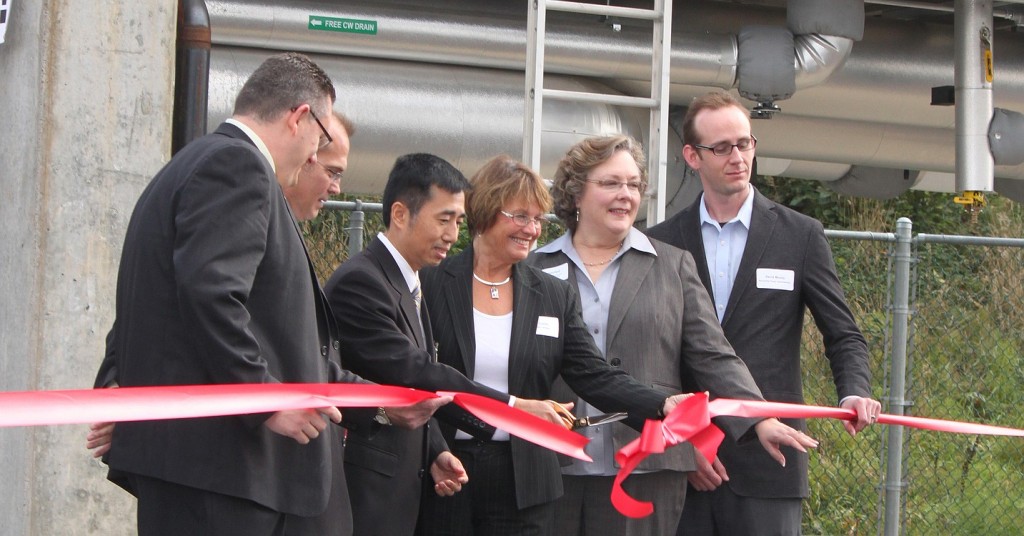o Annual energy savings: Approximately four million kilowatt hours saved
o Estimated cost savings: $200,000 annual reduction in energy costs
o Emission reduction: Nearly 1.3 million pounds of carbon dioxide prevented each year
o It is the largest energy efficiency project in Clark County
On Thursday WaferTech unveiled a new $1.6 million, energy efficient cooling system at its Camas manufacturing facility. According to President KC Hsu, the company now has a solid hold on bragging rights for producing the lowest carbon footprint of any semi-conductor manufacturer in the world today.
“Saving energy and being good environmental stewards is vital for TSMC and WaferTech,” Hsu said during a ceremony and luncheon event attended by local political and business officials, and staff from government agencies involved in the endeavor.
Installation of the project, which required 2,000 construction hours to complete, allows a savings of enough energy to power 350 homes every year. The savings going forward are equal to the salaries of six WaferTech production specialists.
WaferTech’s James Woodley initiated the project, which in the early design stages was about $250,000 over budget. The cost was whittled down to fit within financial constraints. He said he is pleased with the end result, which is actually a cooling system that uses a relatively simple process.
“I believe it’s pretty unique,” Woodley said. “I don’t know of any other site doing this. It really took a combination of a lot of people to complete this project.”


